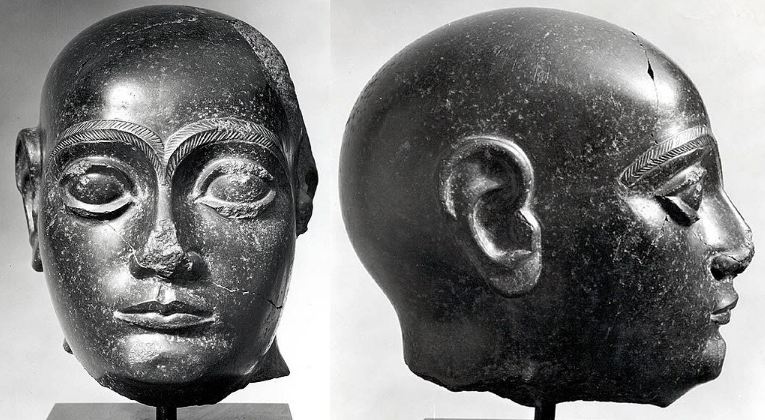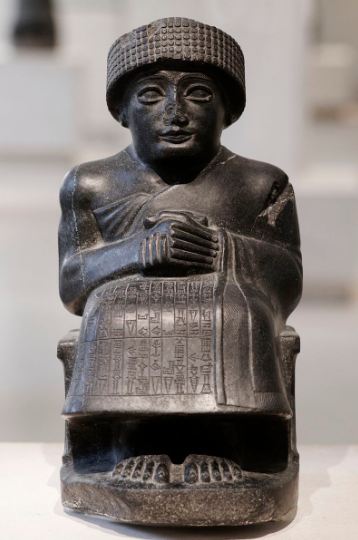For long, the debate around Sumerian civilization has been brought up from time to time. Researchers have put in much time and effort to come to a solid conclusion but all in vain. It all starts from Sumer, which was basically the southernmost region of ancient Mesopotamia. Today, that region is known as Iraq and Kuwait. It is said that the name comes from the north Mesopotamia language, Akkadian, which means the ‘Land of the civilized Kings’.
Furthermore, the Sumerians were known as ‘black-headed people’. According to the list of Sumerian Kings, when the humans were provided gifts by God to cultivate the society, they did so by forming a city by the name of Eridu in the Sumer region. Although the Uruk city of Sumar is known to be the oldest city in the world, it was the city of Eridu from where it all began, particularly civilization. Therefore, if you have been wondering what happened to the Sumerians, this article is surely going to answer that.
Ubaid Period
For centuries, it was believed that the Sumer region was first inhabited around 4500 BCE. Historians have been debating around this debate for a while until it was found out that human activity in the area was initiated much earlier. The first people who inhabited this region were not the Sumerians and were unknown. The archeologists had termed these people ‘Ubaid’. The name was not given just because the archeologists thought that they deserved some type of recognition but due to the artifacts that were discovered, proving their existence.
Regardless of when they arrived at this place, one thing was for sure that these people transformed from a hunter-gatherer society to an agrarian one before 5000 BCE. Significant evidence suggesting the existence of Ubaid people was found from al-Ubaid and Southern Iraq as well. The evidence included tools such as knives, hoes, sickles, and bricks, etc. At this point, researchers were sure that Ubaids were the first inhabitants of the region. However, at what point in time the Sumerians arrived at this place, is still unknown.
Sumerian King List
Noted scholar Samuel Noah Kramer based on the first brief recorded statement of the first Sumer ruler, stated that the first king was an individual named Etana of Kish. It could be said that the individual received the throne quite early somewhere in the third millennium BC. The Etana of Kish in the Sumerian King List is described as the ruler of helped stabilize all the lands. The Sumerian King List is a record of all the kings that had ruled Sumer along with their accomplishments. The purpose of this list was to continue the order and preserve the history of civilizations.
The Sumerians particularly believed that civilization was the result of GOD’s triumph over chaos. Furthermore, it is also believed that the King list was also created to justify and legitimize the rule of King Utu-Hegal of Uruk. At the time, he was shown as the most recent ruler in the Kings list. If you study Etana, you will come to find out that it is simply a myth. People believed that it was a man who once ascended to heaven by riding on the back of an eagle and like other kings in the list, featured superhuman powers.
Utu-Hegal using the King’s list wanted to associate himself with the same rulers. Upon the creation of the King’s list, it would become easy for him to do so. Furthermore, the Mesopotamians believed that Gods had already done their work and put the earth in motion. Humans were merely co-workers who were there to maintain order and hold chaos at bay. Therefore, the historians of the time focused on developing that relation between gods and rulers. Since the writers of the region did not give any importance to putting down human accomplishments in writing, there is little or no evidence available at modern scholar’s disposal. Much of history and evidence was never recorded. Therefore, there is little evidence suggesting what really happened to the Sumerians.
The Rise of Cities
Whenever a city arose in the region of Sumar by 3600 BCE, it invented something. For instance, writing, the wheel, agricultural processes such as irrigation and sailboat, etc. All were invented by different cities. Both India and China claim to be the very first cities in the world but at the same time, the world acknowledges the fact that the first cities in the world were given birth in Sumar, which included Ur, Uruk, Eridu, Isin, Kullah and Adab, etc. The Uruk City is believed to be the first city in the world. Moreover, it has been reminded again that these names were not of Sumerian origin but were given by Ubaid’s. These cities were initially established as small villages much earlier than c.5000 BCE.
As the Sumer region gave birth to cities, the history starts to unfold itself between 5000 BCE to 1750 BCE, when the Sumerian population almost disappeared. This was due to the Elamites and Amorites invading Sumer. Once the Ubaid period ended, it was the Uruk period that came forward. During this period, the cities gained tremendous progress and development with the city of Uruk gaining prominence. As a result, Eridu was considered by the Sumerians as the first city as well.
Sumer’s Akkadian Empire
The Early Dynastic Period between 2900-2334 BCE experienced a shift from a Priest-King to a modern-day King concept, called Lugal meaning big man. During this time, the cities of Sumer were fighting for lands that were arable and consisted of water, until the rise of the First Dynasty of Lagash in 2500 BCE. Moving on, the throne of king Lugal-Zage was then seized by an individual who claimed to be the King’s gardener. His name was Sargon of Akkad and it was he who gave birth to the Akkadian empire. For years, the Akkadian empire ruled over Mesopotamia, which also included Sumer. It was until the Gutians invaded it from the North and brought down the cities by destroying them. The Gutian period is known as the dark period or dark age in Sumerian history. Most Sumerian writers believed that the Gutians were actually punishment from GOD.
The Sumerian Renaissance
The Ur III Period is known to be the last period in Sumerian history. This was called the period of the Sumerian Renaissance because many cultural advancements took place during this period. During the period, both art and technology flourished. Furthermore, schools were established, aquariums came into being, the first love song was introduced along with many other things. It was Ur-Nammu who introduced the first legal code. This highlighted the fact that Ur’s kings wanted to regulate everything.
Furthermore, the existence of the Third Dynasty of Ur in Sumer made it a Patrimonial state. Meaning that the state was run by a patriarchal family. The ruler was believed to be the father, whereas the nation was the family. Then, it was Shugli, son of Ur-Nammu who wanted to differentiate himself from his father. He ran 100 miles between Nippur’s religious center and Ur’s capital city to win the admiration of people at both ends. At the time, gaining admiration and awe was a basic technique to win the hearts of people. Therefore, it was crucial for the kings and their governing powers.
Final Word
The Sumerians migrated to the north after the collapse of the Ur and Ur III periods. This was a time when Sumerian language was only used to write but not spoken. It was entirely replaced by the Semitic Akkadian, putting an end to the Sumerian culture. It all ended with the king being carried away when the Amorites made their way into Sumer after breaching the wall, both put up and strengthened by Shugli’s son and grandson to keep the ‘barbarians’ out. Although the king was carried away but the Sumerian legacy remains for many important reasons such as the invention of the twenty-four-hour day.

